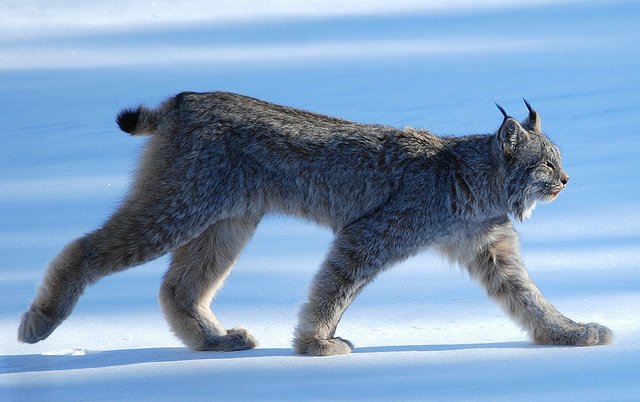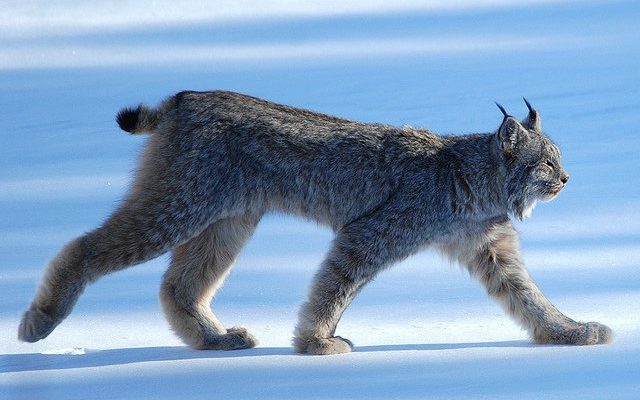
Imagine a rare gem hidden deep within the wilderness, precious yet vulnerable. The Canada lynx is just that. Its populations have fluctuated over the years due to various threats, making it critical to understand its current conservation status. Let’s unravel the story of the Canada lynx and discover the factors influencing its survival.
A Brief Overview of the Canada Lynx
The Canada lynx, or *Lynx canadensis*, is a medium-sized wild cat primarily found in Canada and parts of the northern United States. These cats are known for their long legs, large paws, and dense, soft fur, which help them thrive in snowy environments. Their most distinctive feature is their tufted ears, which not only enhance their hearing but also lend them a unique charm.
These cats are highly specialized hunters, primarily preying on snowshoe hares. This dietary preference ties their fate closely to the hare’s population cycles. When hares are abundant, lynx thrive. However, when their numbers drop, it can lead to significant challenges for the lynx, sparking concerns regarding their survival.
Current Conservation Status
You might be wondering where the Canada lynx currently stands on the conservation scale. According to the International Union for Conservation of Nature (IUCN), the Canada lynx is considered “Least Concern” globally. However, this does not paint the whole picture. In the U.S., the Canada lynx has been listed as threatened under the Endangered Species Act since 2000, primarily due to habitat loss and climatic changes impacting their prey.
The tricky part is that conservation status can vary regionally. While the overall population may seem stable, certain areas—like the northeastern U.S.—show alarming declines. So, while it might not be on the brink of extinction, the Canada lynx faces serious challenges that require our attention and action.
Threats to the Canada Lynx
Understanding the threats that the Canada lynx face is crucial. Here are some of the main factors contributing to their vulnerability:
- Habitat Loss: Urban expansion and logging have fragmented forests, making it harder for lynx to find both shelter and food.
- Climate Change: Altered weather patterns affect snow depth and duration, which are critical for their hunting techniques, especially during winter.
- Prey Availability: Declines in snowshoe hare populations due to habitat changes directly impact lynx survival.
- Human Encroachment: Increased human activity, including hunting and recreational activities, can lead to direct competition and disturbance.
With each of these threats, it’s like taking away pieces of a jigsaw puzzle. The more pieces you remove, the harder it becomes to see the full picture.
Conservation Efforts
So, what’s being done to help the Canada lynx? Conservation efforts are underway in various forms, from research initiatives to public awareness campaigns.
One notable effort is the U.S. Fish and Wildlife Service’s recovery plans, emphasizing habitat protection and restoration. These plans aim to ensure that the lynx have enough space to roam and sufficient prey to hunt. Some areas have also been designated as protected land, helping shield the lynx from habitat loss.
Additionally, researchers are studying lynx populations to assess their health and migratory patterns. Understanding how these cats are adapting to their environment is key in formulating effective conservation strategies.
The Role of Public Awareness
Considering the Canada lynx’s plight, public awareness becomes a powerful tool. The more people know about this beautiful creature, the more likely they are to support conservation efforts. Schools, nature centers, and wildlife organizations are actively working to educate the public about the importance of protecting not just the lynx but also the entire ecosystem it inhabits.
You might even find community events, like local wildlife talks or rescue fundraisers, where folks come together to advocate for these majestic cats. It’s a reminder that even small contributions can lead to significant changes.
What Can You Do to Help?
Feeling inspired to help the Canada lynx? There are plenty of ways to make a difference:
- Support Conservation Organizations: Donating to or volunteering with groups focused on lynx conservation can significantly impact their survival.
- Advocate for Wildlife Protection: Stay informed and support policies that protect natural habitats and wildlife.
- Practice Sustainable Living: Reducing your carbon footprint can help combat climate change, directly benefiting wildlife habitats.
- Spread the Word: Share information about the Canada lynx with friends and family to raise awareness.
Every little action helps create a ripple effect in conservation efforts.
The Canada lynx is a captivating creature that embodies the wild beauty of North America. While it may not currently be classified as endangered globally, its vulnerable populations in various regions remind us that vigilance is essential. The lynx’s fate is closely tied to our actions, from understanding their habitat needs to advocating for policies that protect wildlife.
So, let’s join forces to ensure that future generations can appreciate the Canada lynx roaming freely in the forests. It’s a collective responsibility — and honestly, it’s a journey worth taking.

